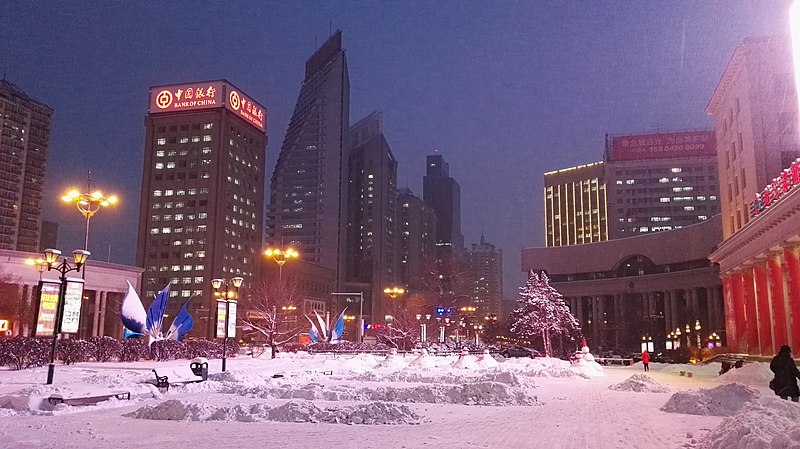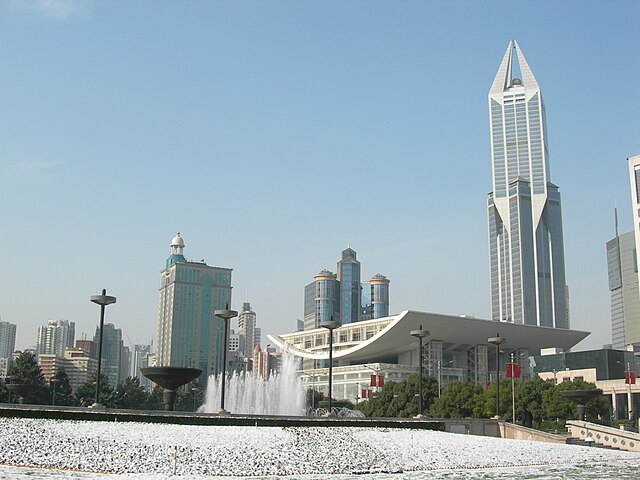
On Friday, 2 July 2021, Thammasat University students are cordially invited to join a Zoom presentation of the book Making China Modern by Professor Klaus Mühlhahn.
Professor Mühlhahn is a German historian who teaches at the Free University of Berlin.
The Thammasat University Library collection already includes a catalogued copy of Making China Modern: From the Great Qing to Xi Jinping which is available for readers.
Another book by Professor Mühlhahn in the TU Library collection is Criminal Justice in China: A History.
The TU Library also owns many other books about different aspects of the history and culture of China.
The event will take place at 4pm Bangkok time and is presented by King’s College London (KCL), The United Kingdom.
Students may register for the event at the following link:
https://us02web.zoom.us/webinar/register/WN_rPvcjWOCT8uCmLsL4sfsMQ
For further information or with any questions, students may write to this email address:
hannah.bretherton@kcl.ac.uk
The moderator of the event will be Professor Kerry Brown, Director of the Lau China Institute and Professor of Chinese Studies at KCL.
The TU Library also owns a number of books written by Professor Brown.
As the KCL website explains,
It is tempting to attribute China’s recent ascendance to changes in political leadership and economic policy. Making China Modern teaches otherwise. Moving beyond the standard framework of Cold War competition and national resurgence, Klaus Mühlhahn situates twenty-first-century China in the nation’s long history of creative adaptation.
In the mid-eighteenth century, when the Qing Empire reached the height of its power, China dominated a third of the world’s population and managed its largest economy. But as the Opium Wars threatened the nation’s sovereignty from without and the Taiping Rebellion ripped apart its social fabric from within, China found itself verging on free fall. A network of family relations, economic interdependence, institutional innovation, and structures of governance allowed citizens to regain their footing in a convulsing world. In China’s drive to reclaim regional centrality, its leaders looked outward as well as inward, at industrial developments and international markets offering new ways to thrive.
This dynamic legacy of overcoming adversity and weakness is apparent today in China’s triumphs—but also in its most worrisome trends. Telling a story of crisis and recovery, Making China Modern explores the versatility and resourcefulness that matters most to China’s survival, and to its future possibilities.

Excerpts from Professor Mühlhahn’s book have been posted online, including the question of whether environmental activism can Succeed in China:
There was frequent outrage and despair about China’s worsening environmental situation. The era of super high growth, above all, took a heavy toll on the environment. There was little question that economic growth came at the expense of the country’s air, land, and water resources, much of them already degraded by decades of Stalinist economic planning that emphasized the development of heavy industries in urban areas, and by centuries of deforestation before the modern period.
In 2012, less than 1 percent of China’s 500 largest cities met the World Health Organization’s air quality standards. The heavy air pollution in China was mostly caused by the use of fossil energy, especially coal, which China relied on for 70 percent of its energy needs. China had abundant supplies of coal and had been burning more of it per year than the United States, Europe, and Japan combined since 2007, although consumption declined after 2014. Energy consumption grew 130 percent from 2000 to 2010. As Chinese citizens became wealthier and moved into cities, they used more energy and contributed more to the environmental problems. Heavy traffic caused by increasing car ownership became the leading source of air pollution in Chinese cities.
Water was an equally acute challenge. China had only one-fifth as much water per capita as the United States. But while southern China was relatively wet, the north—home to about half of China’s population—was an extensive, dry region at risk to become the world’s biggest desert. Ten northern provinces fell below the World Bank’s water-poverty level, resulting in high rates of land degradation and desertification. Industry and agriculture used nearly all of the country’s water resources, but household consumption was also on the rise. China’s water was also highly polluted. In many parts of China, factories and farms discarded waste into surface water. China’s environmental monitors estimated that one-third of all river water, and many of China’s great lakes—the Tai, Chao, and Dianchi—had the most degraded quality, rendering their waters unfit for agricultural use and human consumption.
At the same time, soil pollution from factories had seriously contaminated some of China’s arable land. The Chinese government released a report in 2014 that said nearly one-fifth of its arable land was contaminated—an indication of the toxic results of China’s rapid development and its lack of regulations over commercial activities. The soil pollution had severe consequences for the national food chain. There was increasing concern among Chinese citizens and some officials over soil contamination in the main agricultural centers, because of the potential effects on food safety throughout the country. Skyrocketing water and air pollution brought about a number of severe public health challenges. Rising toxic emissions from coal and fuel oil caused growing rates of respiratory and cardiovascular diseases, and so did acid rain. All along China’s major rivers, Chinese citizens experienced rising rates of disease such as cancer, tumors, and other health problems related to pollution.
There was widespread skepticism of the long-term compatibility between a flourishing market economy and an authoritarian communist polity, fueling a pervasive feeling of uncertainty.
It seemed clear that China’s significant environmental problems could only worsen with continued global warming. A 2015 report by the Chinese government provided a dire scientific assessment of the impact of climate change on China. The report urged more spending on preparing to cope with the increasing likelihood of frequent natural calamities such as extreme droughts, floods, and heat waves. Rising sea levels were among the threats receiving most attention in the report. The concern was that, as polar ice melted and ocean temperatures rose, seas across the world would swell. Indeed, because the changes were uneven, the waters off China’s coast had already been rising faster than the global average.
According to the findings, the sea waters along the coast of eastern China will likely rise between 40 and 60 centimeters by the end of the 21st century, exposing Shanghai and other cities to tidal floods and severe damage from storms and typhoons. The report also predicted that inland China would experience major shifts in rain and snowfall, which would reshape agriculture. Rising temperatures would also mean the air absorbed more moisture, which would then likely be dumped in increasingly erratic precipitation patterns, especially in northern China. The net effect, according to the report, was that China’s water resources, already strained, could shrink 5 percent by midcentury. Irregular shifts in rainfall would not only result in major changes in farming, but could also put unanticipated heavy stress on infrastructure. In addition to environmental or economic risks to China, these changes implied national security issues. Alterations of current river flows and water volumes might then lead to struggles over cross-border water resources along China’s southern borders and surges of transnational migration, triggering international disputes and conflict.

(All images courtesy of Wikimedia Commons)
